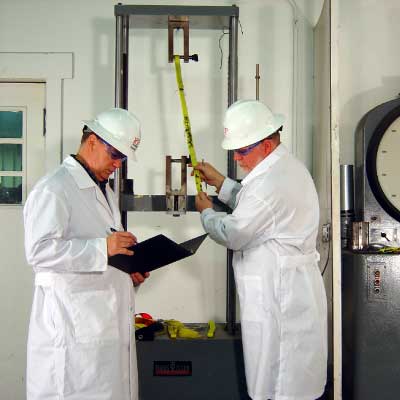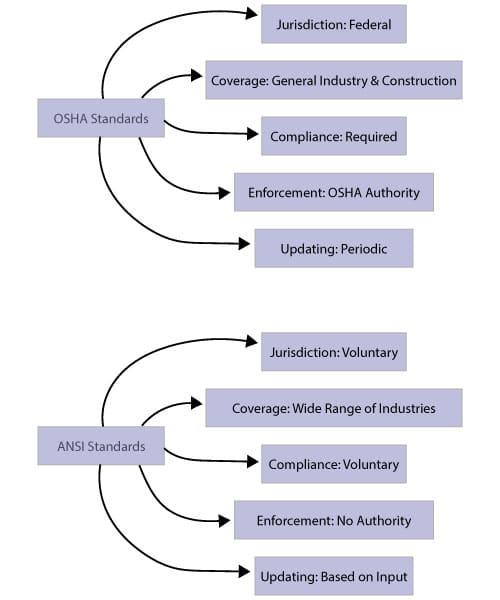As a fall protection equipment manufacturer, it’s crucial to understand the regulations and standards set by the industry. Two major organizations that play a role in setting these standards are OSHA (Occupational Safety and Health Administration) and ANSI (American National Standards Institute). But what exactly sets OSHA and ANSI apart and how do they impact the fall protection industry?
What’s the difference between ANSI & OSHA?
OSHA is a government agency that sets and enforces workplace safety standards in the US. It falls under the Department of Labor and ensures employers provide a safe work environment for their employees. ANSI, on the other hand, is a private non-profit organization that develops and maintains standards for products, services, processes, and systems across various industries, including fall protection. In simple terms, OSHA standards are legally enforceable, whereas ANSI standards are considered best practices.

Are ANSI standards approved by OSHA?
ANSI is not directly approved by OSHA, but several OSHA standards are based on ANSI standards and guidelines. For instance, the OSHA standard for fall protection in construction (29 CFR 1926.503) references ANSI standards, including the ANSI Z359.1 standard for fall protection systems and equipment. OSHA ensures everyone working at heights is equipped with the right gear to stay safe, and ANSI standards provide a foundation for this. By referencing ANSI standards, OSHA can make sure the fall protection equipment being used is reliable, meets performance requirements, and keeps workers safe from falls. It also promotes consistency and standardization in the fall protection industry.
Are ANSI Standards required by law?
ANSI standards are not mandatory by law, but they are widely used as the foundation for industry standards and best practices. Many OSHA standards reference ANSI standards and using products that meet ANSI standards can help comply with OSHA requirements.
What is the ANSI standard for fall protection?
The ANSI standard for fall protection, ANSI Z359, is a comprehensive set of guidelines for fall protection systems and equipment. It covers various fall protection gear, such as personal fall arrest systems, vertical lifelines, horizontal lifelines, and more. ANSI Z359 provides minimum performance requirements for fall protection equipment to ensure worker safety.
Is ANSI Z359 required by OSHA Standards?
OSHA does not mandate ANSI Z359, but many of its fall protection standards are based on or reference ANSI Z359 standards. Employers are required to comply with OSHA standards, and using fall protection equipment that meets ANSI Z359 standards can help ensure compliance with OSHA requirements.
Do employers have to follow ANSI standards?
Employers are not legally obliged to follow ANSI standards, but they must comply with OSHA standards, which often reference ANSI standards. Using products that meet ANSI standards can help ensure compliance with OSHA requirements and provide worker safety.
In a Nutshell
ANSI and OSHA play a crucial role in ensuring worker safety through their fall protection standards and requirements. ANSI provides guidelines for fall protection systems and equipment, while OSHA sets and enforces workplace safety standards. Although ANSI standards are not mandatory, many OSHA standards reference ANSI standards and using products that meet ANSI standards can help comply with OSHA requirements. Employers have a legal obligation to provide a safe work environment, and using fall protection equipment that meets both ANSI and OSHA standards can ensure worker safety. At FrenchCreek Fall Safety, we offer fall protection products that meet both ANSI and OSHA standards and are designed to provide high levels of safety and security for workers. By following both ANSI and OSHA standards, employers can rest assured that their workers are protected against falls and are working in a safe environment.
FrenchCreek offers several courses that cover more specific standards and differences between OSHA and ANSI. View our training course catalog, and contact our fall protection training staff for more information.